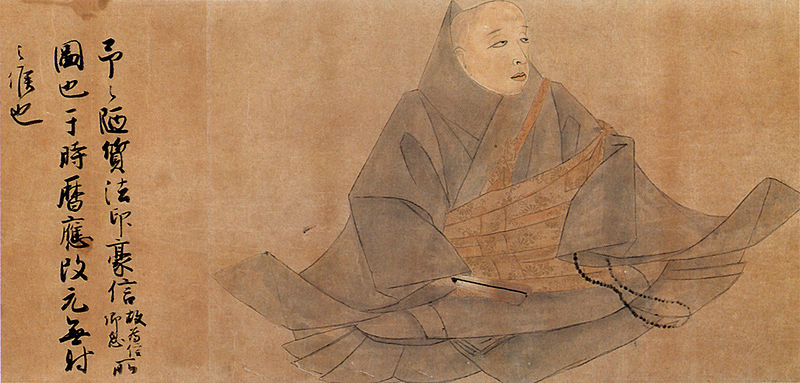<Back to Index>
- Psychiatrist Richard von Krafft - Ebing, 1840
- Writer Ernest Thompson Seton, 1860
- Emperor of Japan Hanazono, 1297
PAGE SPONSOR

Emperor Hanazono (花園天皇 Hanazono - tennō) (August 14, 1297 – December 2, 1348) was the 95th emperor of Japan, according to the traditional order of succession. His reign spanned the years from 1308 through 1318.
Before his ascension to the Chrysanthemum Throne, his personal name (his imina) was Tomihito - shinnō (富仁親王). He was the fourth son of the 92nd Emperor Emperor Fushimi. He belonged to the Jimyōin - tō branch of the Imperial Family. Tomihito - shinnō became emperor upon the abdication of his second cousin, the Daikakuji - tō Emperor Go-Nijō.
- Tokuji 3, in the 8th month (1308): In the 8th year of Go-Nijo - tennō's reign (後二条天皇8年), the emperor died at the young age of 24; and the succession (senso) was received by his cousin. Shortly thereafter, Emperor Hanazono is said to have acceded to the throne (sokui).
- Tokuji 3, in the 10th month (1308): The nengō was changed to Enkyō to mark the accession of Emperor Hanazono.
Hanazono's father, the retired Emperor Fushimi, and Hanazono's brother, the retired Emperor Go-Fushimi, both exerted influence as cloistered emperors during this reign. In these years, negotiations between the Bakufu and the two imperial lines resulted in an agreement to alternate the throne between the two lines every 10 years (the Bumpō Agreement). This agreement was not long lasting. The negotiated provisions would soon be broken by Hanazono's successor.
In 1318, he abdicated to his second cousin, the Daikakuji - tō Emperor Go-Daigo, who was the brother of Go-Nijō.
After his abdication, he raised his nephew, the future Northern Pretender Emperor Kōgon. In 1335, he became a Buddhist monk of the Zen sect.
He died in 1348. Hanazono's imperial tomb is known as Jurakuin no ue no misasagi; it is located in Higashiyama-ku, Kyoto.
He excelled at tanka,
and was an important member of the Kyōgoku School. He also left behind a
diary, called Hanazono - in - Minki (Imperial Chronicles of the Flower
Garden Temple or Hanazono-in) (花園院宸記). He was a very religious and literate person, never failing to miss his prayers to the Amitabha Buddha.
Kugyō (公卿) is a collective term for the very few most powerful men attached to the court of the Emperor of Japan in pre-Meiji eras. Even during those years in which the court's actual influence outside the palace walls was minimal, the hierarchic organization persisted. In general, this elite group included only three to four men at a time. These were hereditary courtiers whose experience and background would have brought them to the pinnacle of a life's career. During Hanazono's reign, this apex of the Daijō-kan included: Sesshō, Kujō Moronori, 1308; Sesshō, Takatsukasa Fuyuhira, 1308 – 1311, Kampaku, Takatsukasa Fuyuhira, 1311 – 1313, Kampaku, Konoe Iehira, 1313 – 1315, Kampaku, Takatsukasa Fuyuhira, 1315 – 1316, Kampaku, Nijō Michihira, 1316 – 1318, Sadaijin, Udaijin, Nadaijin, Dainagon.